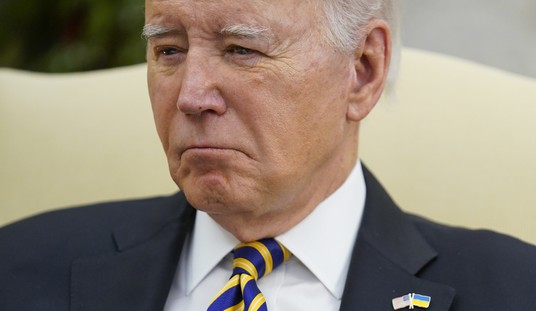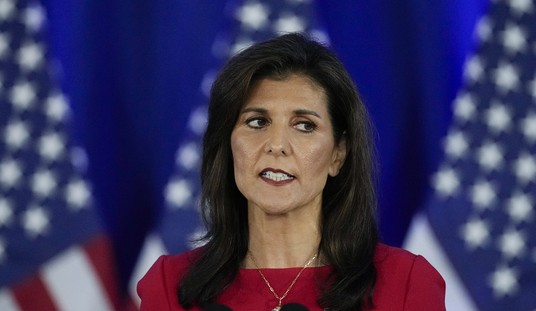Most polls show that the Republicans will make gains in the House and Senate against the Democratic Party. For example, Dick Morris believes that “the Democratic Party is facing the biggest defeat in midterm elections in the past 110 years, perhaps surpassing the modern record of a 74-seat gain set in 1922”. But that does not measure the true variable of interest: the extent to which the grassroots political uprising can make changes to the structure of the system.
Changing the structure of the system is an action some on the Left call treasonous. But the Left itself has worked consistently towards changing America into the welfare states they so admire in Europe. From their point of view that kind of change isn’t “treason” but progress. JC Bennett at the National Review argues that by the beginning of the 21st century this long progressive march toward “social democracy” seemed almost within reach.
By the end of the 1970s, America stood virtually alone in a world of seemingly universal consensus for a strong managerial state. … For decades — at a minimum, since the beginning of the Progressive Era, and arguably earlier — America had been on a course toward a more centralized society … the eastern and West Coast states had gone farther with the progressive agenda than the country at large … and were therefore beacons of the future.
And then the Great U-Turn away from the Welfare State began. It started with Carter, accelerated through Reagan driven by fundamental changes in the world. Yet it may have received its greatest impetus from the most unlikely source of all: Barack H. Obama. Obama’s aggressive Hope and Change initiative came precisely at the time when it was least likely to succeed. The catastrophic effects of his policies drove the U-Turn apace. Bennett writes:
Yet no sooner had Obama and his supporters started down this road than the decentralized nature of post-U-turn America threw roadblocks in their path. Diverse “new media” prevented the administration from flooding the discussion zone with a uniform message and provided a channel for organizing protests, leading to the tea-party movement. Resurgent state governments have filed suit to overturn Obamacare, and perhaps shrink the scope of the Commerce Clause in the process. … Obama came to office hoping to found the New New Deal, but America is no longer the America of FDR. A combination of the Founders’ gift of a fundamentally decentralist Constitution and the sheer elbow room of the American continent appears to be pointing us to a third era in American history, taking the technological and civil-rights gains of the second, centralized, industrial era, but returning to the decentralized and diverse community vision of the Founding.
If any political vehicle embodies the agenda of the Great U-Turn it appears to be the Tea Party, whose avowed goals are shrinking the scope and size of the Federal Government itself not just swapping Democrat Washington insiders for Republican Washington insiders. The problem the Tea Party faces is finding a way to achieve this in the face of an entrenched political elite. Merely electing new representatives to a bloated Federal government is believed to have little chance of success because few can resist being co-opted. So the standard “radical” way forward has always been thought to run through a Constitutional Convention.
Article V of the United States Constitution stipulates how amendments can be proposed and ratified. Wikipedia notes: “Amendments may be proposed by either two-thirds of both houses of the United States Congress or by a national convention. This convention can be assembled at the request of the legislatures of at least two-thirds of the several states. To become part of the Constitution, amendments must then be ratified either by approval of the legislatures of three-fourths of the states or ratifying conventions held in three-fourths of the states.”
But calling a Constitutional Convention at time of great political division has been called by some “the nuclear option” because of the potentially devastating effects: in a highly charged environment, changing the Constitution becomes a zero-sum game for one side or the other. The Left will see in it a process to amend the Constitution as an existential threat to their agenda and so, for that matter, might conservatives. Many people would like to see the Constitution changed as little as possible. Under these circumstances, is there another way forward?
One possibility is through the pervasive, but little noticed method of interstate compacts. Michael Buenger and Richard Masters describe how this method has historically been used to solve interstate problems without elevating the matter to the Federal Government. The framers of the Constitution provided several mechanisms for managing interstate relations, the Full Faith and Credit and Supremacy clauses are best known. But one of the most widely used is the mechanism of “interstate compacts”. Traditionally, these compacts have been used to adjust interstate relations without running afoul of the Federal Government. But they predate the United States itself, having been used in Colonial times to avoid having to refer relatively minor disputes to the Crown.
Since the establishment of the United States, interstate compacts have been used to govern navigation, settle fishing rights, create administrative bodies and to coordinate legislation. Under the Federal structure compacts cannot defy the will of Congress, but where Congress explictly approves them or implicitly grants them legitimacy by going along, they become part of the fabric of the land. Because of the quasi-sovereign nature of the states it is not even clear whether Congress, once it has consented to a compact and enshrined it, can easily rescind them.
Buenger and Masters point out that compacts are “binding legal contracts” and once entered into by the several states and the Federal government cannot so easily be put aside. In fact, Congress by acceding to a compact is said to be performing a political act rather than passing a strictly legal judgment. What can safely be said is that the durability of compacts remains a gray area in a very gray area.
So what would happen if several states created their own healthcare regulatory framework and established an interstate compact? Assuming that Congress approved it, what effect would it have? The compact would as someone commented, “call the question”. The states by exercising their power and obtaining approval by Congress, dare the Federal Government to take it from them. By exercising their jurisdiction, states would directly raise the question of whether President Obama’s healthcare program was usurping a prerogative that rightfully belonged to them. At the minimum, it would require a political resolution of the issue and in a manner that does not amend the Constitution.
Suppose a group of states got together and decided to fully implement a market-based system: a high-deductible catastrophic insurance program, medical savings accounts, price transparency, etc. Each state that joined the Compact would leave to the States as to the details of their legislation, but pool risk for the catastrophic insurance program.
Further suppose it was offered as an alternative to Obamacare. States could decide to stay within the Federal Obamacare system if they chose or join the State compact. States which liked neither could create an alternative compact of their own. No one would be compelled. Congress would have its say. If the States presented the Compact to Congress for ratification they would be acting in a perfectly legal manner. But an interesting political dynamic would be present. The group coming to Congress would not be private citizens but elected representatives of their respective states speaking with formal authority on behalf of their constituents. There is no way to construe it as a usurpation of authority, but it would serve to show up any real usurpation of authority by contrast.
This was a plan put to me by long-time commenter Leo Linbeck III and the singular aspects of it were evident from the first. Here was a way to raise political questions without going through the courts, without violating the Federal structure. Above all, it would be a way to return the initiative to subsidiary levels of government.
Obviously the only way to see if it will work would be to try it. And it is far from clear how it would fare. But if the Interstate Compact idea got any traction it would provide a way forward for the Great U-Turn. Who knows? As James Bennett put it, “a combination of the Founders’ gift of a fundamentally decentralist Constitution and the sheer elbow room of the American continent appears to be pointing us to a third era in American history, taking the technological and civil-rights gains of the second, centralized, industrial era, but returning to the decentralized and diverse community vision of the Founding.”









Join the conversation as a VIP Member